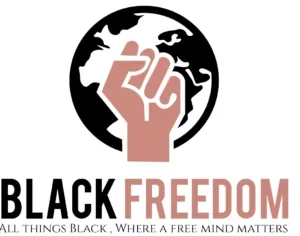Moses Harris, Wells Fargo, tries to boost middle market owners’
Moses Harris has been motivated by his desire to uncover the overlooked — owners of Black middle market companies. As Wells Fargo’s Black/African American Segment Leader, Harris his on a mission to elevate the stories of those owners, to expand their access to capital and customers, and to support their overdue, equitable participation in the global economy. “Stories, coupled with data, have the power to change systems, unlock product innovation and design better policy, benefitting generations to come,” Harris says.
One of the more influential advocates for Blacks in commercial banking, Harris wants to make the bank a place of belonging for all, and especially Black folks. With that in mind, Harris took the time to answer some pressing questions for rolling out.
Can you share more about your role?
As head of the Black/African American Segment of Wells Fargo Commercial Banking, my responsibility is to grow, deepen, and retain relationships with Black-owned middle market businesses with annual revenues between $25-500 million. Nationally, I help bankers identify opportunities, understand the clients’ needs, tailor solutions, and raise awareness of Commercial Banking’s commitment to serving the Black/African American community. I am responsible for creating partnerships, programs, and insights that deliver real value to clients and help them achieve their personal and business financial objectives.
I’ve worked 14 years for Wells Fargo. But my career here actually began as a summer intern in 2009, while I was a student at Fresno State. A couple years later, I joined the company full-time as a Commercial Banking financial analyst in Oakland, Calif. Outside of work, I enjoy serving as a mentor and financial literacy instructor for 100 Black Men of Los Angeles. In fact, a dozen of my high school and college mentees joined me in Atlanta this week for the annual meeting of Black Men of America.
What led you to pursue this research and to commission the first-ever report focusing exclusively on middle market business owners and their firms?
The advocacy points that most people think about when talking about Black business often focus the conversation around small business, and the Black middle market is often overlooked.
Why does this matter? Because when a company is trying to double its size, the advocacy points are very different for a million-dollar company trying to reach $2 million, versus a $50-million company trying to reach $100 million.
Right now, there’s no empirical data available to articulate the narratives of the Black middle market. When we capture it, we can use this data to better advocate for the need to expand products and services to fit the unique needs of the Black middle market. This will help us create an end-to-end pathway for our small businesses that are growing rapidly to matriculate through the middle market ultimately reaching the public financial markets so we can grow beyond the five firms there today.
And there’s not much empirical data available to articulate the narrative of the Black middle market – challenges like access to multiyear corporate contracts and implicit bias in contract awards, inequitable insurance/bonding requirements just for an opportunity to bid for new business, and sometimes elusive and hollow corporate supplier diversity contract programs that end up holding back their growth.
The tool I needed to articulate to very interested stakeholders was a detailed financial “heat map” that clearly presented the Black middle market’s financial characteristics: industry concentration, balance sheet leverage, income statement performance, and how these data points compare with their white counterparts. With this information, my hope is to drive boardroom conversations beyond anecdotal stories and experiences to a data-driven business case.
As a leader in commercial banking, what is your hope for building a commercial banking industry that better serves Black/AA leaders of middle market companies?
My hope is that the commercial banking industry will come to understand the nuances and opportunities that Black-owned businesses present. When we understand the unique challenges, we can create solutions that help bolster economic growth.
Building on the case for data, there’s an opportunity for us to adjust credit policies and broaden the definition of creditworthiness, including a racial-equity lens that factors in the historic, uneven playing field that Black businesses must overcome.
When we compare, for example, a Black-owned widget manufacturer and a non-black-owned widget manufacturer and unpack their balance sheets, we see that the latter’s assets are often acquired at a lower cost basis and have had more time to mature in value over generations, creating a significant competitive advantage and making them easier to underwrite.
Consider this: if you were able to buy a home in 1940 versus buying a home in 2013, the acquisition costs would be vastly lower. Black folks just haven’t had the opportunity to buy at historically advantaged prices. If you were a Black family that purchased a home in a red-line district, you weren’t granted access to fair financial markets and fair appraisal standards, impacting your ability to generate wealth.
Accumulated wealth has been leveraged to grow small businesses into middle market companies The lack of generational wealth of Black people is part of the reason why we see an overrepresentation of Black businesses in asset-light industries with low barriers to entry, high levels of competition, and commodified profit margins, such as food services, IT consulting, staffing companies, and janitorial companies. Seldom do we see Black-owned businesses in asset-heavy industries requiring large sums of capital investment and capital improvement such as metal refineries/industrials, oil and gas, aerospace and defense, and innovative big tech such as software-as-a-service (SAAS).
That’s why data is so powerful. Think about how Americans changed their habits by becoming aware of heart disease. Since 1960, stroke rates have declined 70%! Through education, awareness, and storytelling, decision makers can see we need what we need to fix in the Black middle market. That’s why we’re documenting these trends.
How do you utilize data and technology in your industry or organization?
We are going to use the data to create innovate solutions.
For example, look at the National Urban League’s Urban Appraiser’s Initiative – a partnership with Wells Fargo. Data told us that homeownership and building generational wealth for Black families is deeply challenging. So, we used that knowledge to build a pipeline of diverse appraisers that will empower Black business owners, homeowners, and communities. We have hired 25 Black appraisers.
In Commercial Banking, I can use data about Black-owned companies to look at industries with high concentrations of Black-owned companies, to compare financial trends relative to their industry and their peers and overlay that with a racial equity lens (in compliance with Fair Lending regulations) to arrive at more favorable access to products and services.









